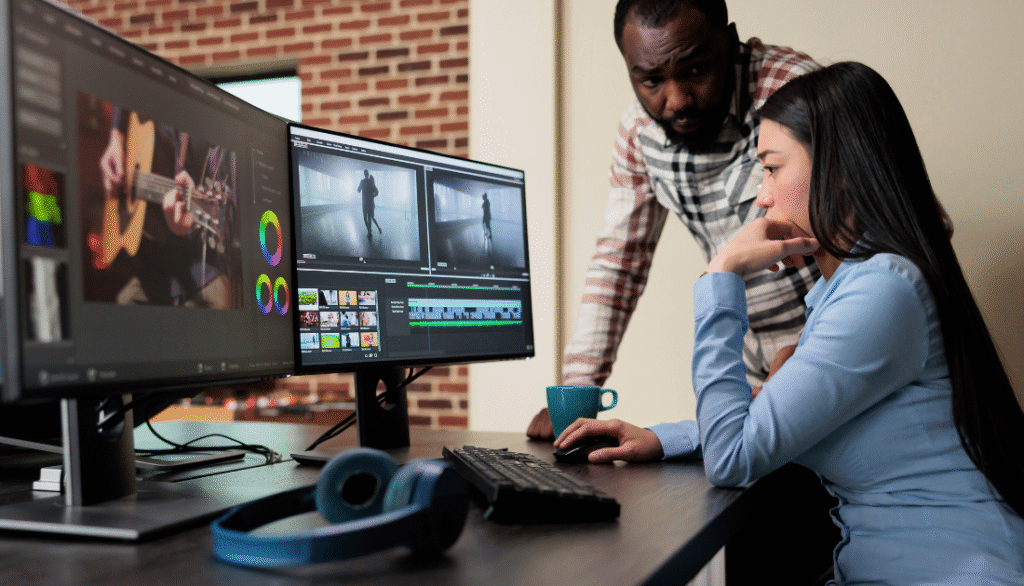Runway has introduced its latest model: Aleph, a video-to-video AI system designed to enhance post-production workflows.
Highlights
- Text-to-Video Editing: Aleph transforms real footage using simple text prompts — enabling creative and technical edits without reshoots.
- High-Level Capabilities: Adjust lighting, swap environments, change camera angles, remove objects, and recolor elements through natural language.
- Cinematic Consistency: The model preserves narrative tone and visual style while performing granular scene adjustments.
- Motion Awareness: Transfer movement and pacing from one clip to another for dynamic scene generation.
- Post-Production Revolution: Enables indie and pro teams to bypass traditional editing bottlenecks and expensive VFX workflows.
- Selective Access: Initially available to Enterprise and Creative-tier users, with wider rollout still pending.
- Industry Excitement: Filmmakers and editors see Aleph as a game-changer for automating second-unit shots and cleanup tasks.
- Limitations Remain: Integration with editing software, metadata preservation, and production-grade testing still need evaluation.
With Aleph, users can upload existing video footage and apply creative or technical changes using simple text prompts — from altering lighting and angles to replacing environments and removing objects.
Aleph’s Capabilities
Aleph enables users to make a wide range of post-production edits through natural language instructions.
- Environmental transformations, such as changing a sunny day to a rainy night.
- Cinematic enhancements, like generating alternate camera angles (wide, close-up, overhead).
- Object-level edits, such as recoloring elements, removing unwanted structures, or modifying textures and materials.
- Motion adaptation, allowing a video’s movement trajectory to be applied to different scenes.
The model is trained to understand both the content and stylistic intent of the original footage, which helps maintain consistency across edits.
Runway describes Aleph as an in-context, multi-task video model, developed to support narrative and stylistic continuity while enabling granular manipulation.
From Generated Clips to Real-World Editing
Earlier generations of AI video tools were focused on creating content from scratch, often limited to short and stylized clips.
Aleph shifts that focus toward transforming real video. Rather than requiring reshoots or complex editing suites, the model allows users to repurpose existing footage, saving time and resources.
For instance, instead of capturing multiple angles during filming, creators can now generate alternate perspectives — like a close-up or reverse shot — from a single master take.
Similarly, unwanted elements such as reflections or background structures can be edited out with a few prompt-based instructions.
Initial Rollout
Runway has confirmed that Aleph is being rolled out first to Enterprise and Creative-tier users on its platform.
Wider access to other user tiers is planned “in the coming days,” but it has not been confirmed whether free-tier users will receive access at the same time. Key technical details — such as input video length limits, file formats, and API access — have not yet been disclosed.
Community Response
Reaction to Aleph has been immediate, particularly among video creators and filmmakers. On forums such as Reddit, professionals have speculated about its potential impact on traditional filmmaking workflows.
Some predict that AI-driven tools like Aleph may reduce the need for extensive on-location shooting, especially for secondary shots or VFX-heavy scenes.
One commenter noted,
“Traditional filmmaking may increasingly become a boutique craft as AI handles broader visual production needs.”
It seems like a growing interest in automating parts of the post-production process — not to replace creativity, but to support more efficient and adaptive workflows.
Professional Perspective
Filmmaking resource CineD reviewed Aleph as resembling a “post-production wish list come to life,” particularly highlighting its ability to:
- Automatically generate coverage shots.
- Modify lighting or ambiance post-shoot.
- Remove or add objects, crowds, or atmospheric elements with consistent shadows and depth.
CineD also flagged some open questions for professional adoption,
- How well Aleph preserves metadata and color fidelity.
- Whether it integrates seamlessly with non-linear editing systems (NLEs).
- How it handles production-scale workflows that require precision and continuity.
While demos are promising, practical use in high-end production environments will depend on how the model performs under real-world constraints.
Unified AI Editing Workflows
Aleph represents a step toward consolidating fragmented AI tools into cohesive video editing platforms.
Where earlier systems were limited to single tasks like style transfer or frame generation, Runway is now aiming for an all-in-one interface that covers camera simulation, motion control, VFX, lighting, and editing — powered by text.
This evolution aligns with trends seen in tools like Runway’s Gen-4 model, which targeted full-scene generation. Aleph, by contrast, brings those generative capabilities into the editing and manipulation of real footage — bridging synthetic and filmed content.


